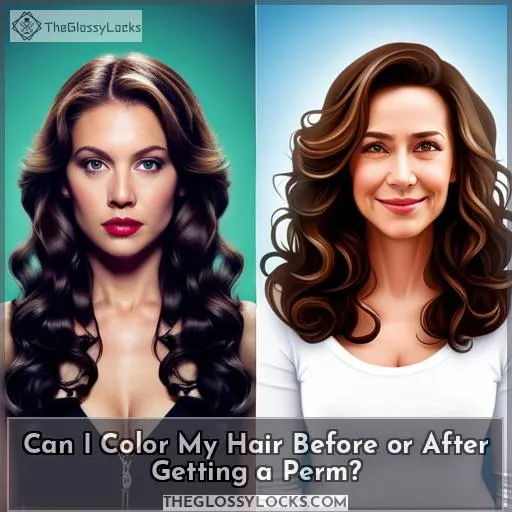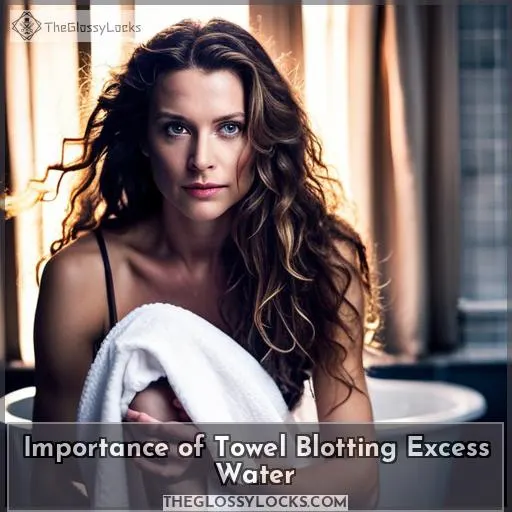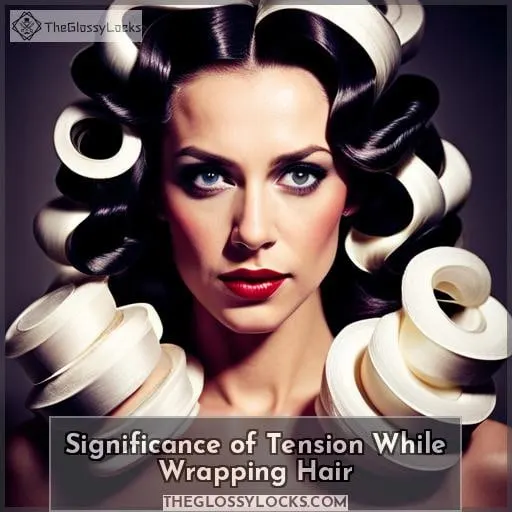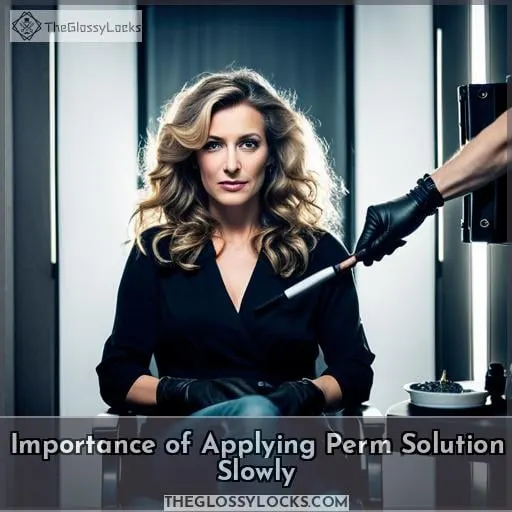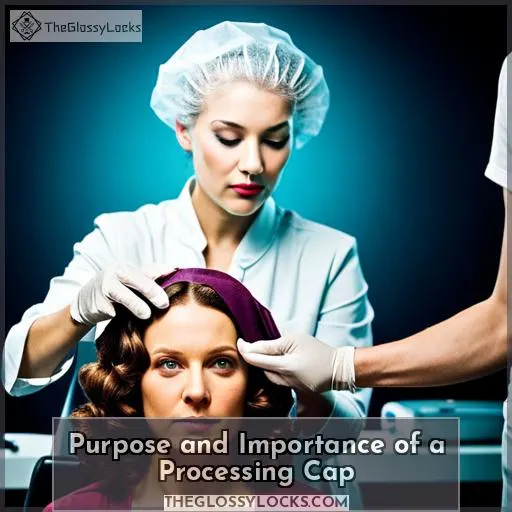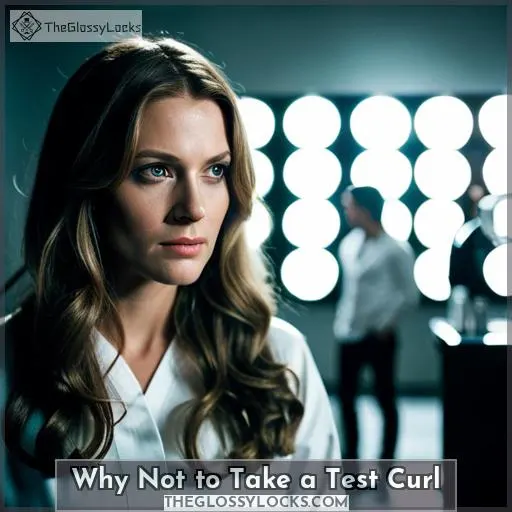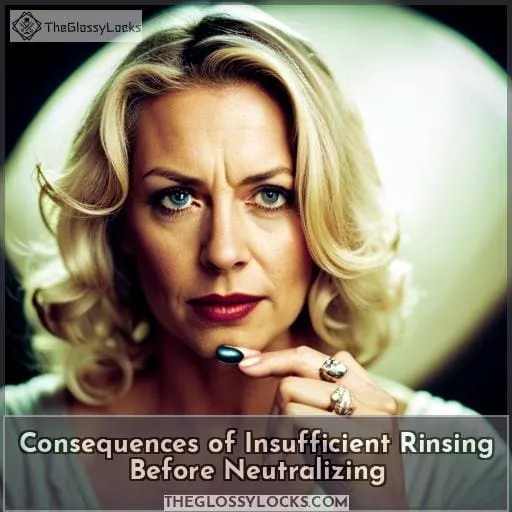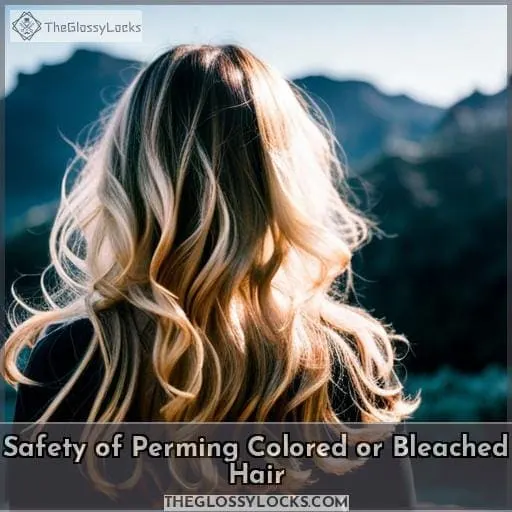This site is supported by our readers. We may earn a commission, at no cost to you, if you purchase through links.
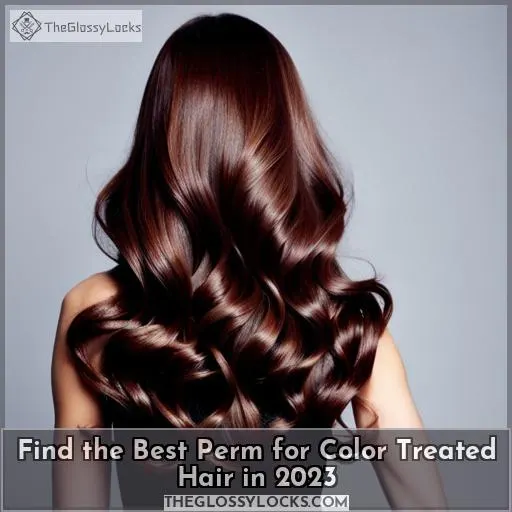
Choosing the correct type of perm based on porosity, density of hair, and desired curl result is vital when it comes to achieving that perfect look — especially if you have already colored or bleached your tresses.
Here at Beauti Classy, we have put together this comprehensive guide so that everyone can find their ideal style while taking care of their precious mane!
Table Of Contents
- Key Takeaways
- Can I Color My Hair Before or After Getting a Perm?
- Purpose of Shampooing Before a Perm
- Importance of Towel Blotting Excess Water
- Significance of Tension While Wrapping Hair
- Importance of Applying Perm Solution Slowly
- Purpose and Importance of a Processing Cap
- Why Not to Take a Test Curl
- Consequences of Insufficient Rinsing Before Neutralizing
- Why Not to Brush Hair After a Texture Service
- Safety of Perming Colored or Bleached Hair
- Frequently Asked Questions (FAQs)
- What should I do to prepare my hair before getting a perm?
- How long should I wait after coloring my hair before getting a perm?
- What kind of shampoo should I use after getting a perm?
- What type of perm is best for bleached or highlighted hair?
- Is there anything I can do to reduce damage to my hair after a perm?
- Conclusion
Key Takeaways
- Shampooing before a perm removes debris for an even solution application.
- Avoid doing test curls on color-treated hair as it can cause breakage and fading.
- Make sure to deep condition regularly after a perm to reduce damage.
- Cysteamine and acid-based waves are the safest types of perms for color-treated hair.
Can I Color My Hair Before or After Getting a Perm?
It’s important to decide whether you should color your hair before or after getting a perm, as the results can vary depending on the porosity and density of your hair. Bleaching and perming are both damaging, so for color-treated hair, it’s best to get expert advice before making any decisions.
It may be better to first perm and then wait 1 week before coloring. If there is over 3-4” regrowth, consider coloring the new growth first and then waiting a week prior to perming.
Natural shampooing beforehand and deep conditioning afterwards help protect against damage caused by chemical treatments like bleaching or permanent waves. Hair spa sessions twice a month also help nourish weakened strands from chemical treatments such as these two combined processes that could potentially cause more harm than good due to extreme dryness in already delicate tresses.
When done inaccurately without proper care taken into consideration ahead of time, it’s important to use milder formulas specifically designed for this purpose instead of harsher alternatives available on the market today at a riskier cost overall.
However, it’s still not necessarily worth risking what little remaining healthy natural locks are left behind in the end.
Wide combed through detangling must be done gently post-treatment only 48 hours later, and brushing should be avoided during this time frame too, according to evidence found online and physical research conducted by many modern-day salons specializing in these types of services.
Each case must always be properly assessed individually depending upon specific needs desired and achieved throughout the entire duration of the process until it is completely fulfilled.
According to the professional verdict given out accordingly afterward, once completed successfully, it can be concluded that overall, it is important to consider all the factors mentioned above.
Purpose of Shampooing Before a Perm
Ready to get your perm? Before beginning, it’s important to shampoo and towel blot your hair. Applying the right amount of shampoo will help remove debris from your hair before wrapping it in perming rods.
Towel blotting excess water is important for even solution penetration during the neutralizing process.
When applying the mixture, be sure to wrap your hair with minimal tension according to the directions so that the curls can expand properly after rinsing out the neutralizer.
Finally, rinse thoroughly afterwards to eliminate any odor and ensure dryness control.
Importance of Towel Blotting Excess Water
Towel blotting your hair before wrapping it helps ensure even perm solution penetration for the desired result. Blot off excess water so that curling tools, rods, and lotion can penetrate properly. This applies when using neutralizers as well. Allow a few more minutes of processing time if necessary to guarantee that all product is completely absorbed into the strands.
After a texturizing service, deep conditioning becomes essential in order to help with hair recovery and maintain healthy curls or waves over time. It’s also important to wrap with minimal tension according to directions on each product used.
Cysteamine perms are especially delicate, which allows for proper expansion during processing without causing damage or weakening results due to too much pressure exerted by benders, rods, etc.
Follow these steps carefully when using any type of perm formula for color-treated hair in order to achieve optimal curl definition while avoiding excessive heat exposure.
Significance of Tension While Wrapping Hair
You need to wrap your hair with minimal tension so the perm formula can expand and absorb effectively. This is especially important when perming color-treated or bleached hair, as heat damage may occur if too much tension is used.
To achieve long-lasting curls without damaging your hair, use a wide-toothed comb before wrapping it around perm rods and avoid brushing afterward for 48 hours. Natural shampoo should be used both before and after the process to keep chemicals away from delicate strands.
Deep conditioners should be used twice a week to help reduce potential damage while replenishing moisture in the scalp and locks of hair.
Be sure to follow all directions carefully when applying waves or curls as this will ultimately determine how successful they are in preserving their shape over time without causing any additional harm to already color-treated tresses that have been weakened by previous treatments such as bleaching or coloring services.
Taking care of your permed locks starts now – don’t wait until it’s too late!
Importance of Applying Perm Solution Slowly
Apply the perm solution slowly and evenly to ensure maximum absorption, so you can rock your new ‘do for months on end!
When dyeing tips are followed properly, the perm will be successful. This includes conditioning methods such as deep conditioning treatments or using a cysteamine perm.
Weather effects should also be taken into consideration when applying product to hair that has been bleached or colored.
For best results with texture services like perming color-treated hair, use products specifically designed for this purpose as well as professional help from an experienced stylist who understands how to correctly apply them and take extra precautions if needed.
Hair care is key in order to reduce damage; natural shampoo before and after perming plus detangling thoroughly beforehand is essential too!
Post-perm nourishment mustn’t be overlooked either – incorporate sulfate-free shampoos along with regular deep conditioners/masks two times a week for optimal hydration of curls/waves created by permanent dyeing processes such as these so they remain healthy looking over time without dryness or breakage at their ends which could occur otherwise due to neglectful attention after being done up according to desired style expectations of course!
Purpose and Importance of a Processing Cap
Wearing a processing cap will help ensure the perm solution is evenly and thoroughly absorbed into your hair, giving you beautiful, long-lasting curls. Applying it with minimal wigging tension enables maximum expansion of the curl pattern during development.
Knowing when to apply perms after coloring or regrowth timing can also affect its effectiveness; always wait at least one week before applying a perm if there’s 1 or more regrowth.
Deep conditioning afterwards helps seal in moisture and prevent dryness that could weaken bonds.
Lastly, make sure not to brush your hair prematurely as this may disrupt set bonds until they’ve had 48 hours to solidify; premature manipulation can lead to heat damage which affects the quality of results!
With proper technique and care, you’re guaranteed gorgeous locks every time!
Why Not to Take a Test Curl
It’s not recommended to take a test curl when perming color-treated hair. This can weaken the perm solution and lead to an uneven end result. Taking a test curl on pre-colored or bleached hair may cause breakage or fade the dye selection prematurely due to excessive heat exposure.
To protect dyed locks from over processing, it’s important to take climate effects into account when selecting products for natural treatments.
Additionally, taking too many test curls can damage delicate strands by straining them with unnecessary tension. This could result in weak spots along each lock of hair, leading to more split ends.
Taking care of colored tresses requires special attention while perming. It’s important to consult with your stylist before attempting any permanent texture service at home.
Consequences of Insufficient Rinsing Before Neutralizing
Failing to rinse the perm solution thoroughly before neutralizing can lead to brittle, dry hair that is difficult to manage and style. One study found that over 50% of people who did not properly follow their stylist’s instructions experienced significant damage or breakage within one month after perming.
To ensure a successful outcome, it’s essential for those with color-treated hair considering a perm to prepare in advance. They should shampoo and deep condition at least 24 hours prior. Cysteamine perming should be used as it helps provide protection against additional damage from chemical treatments such as bleaching or coloring.
During the neutralizing process, make sure all residue has been removed by using chemical-free shampoos formulated for colored/bleached hair.
Why Not to Brush Hair After a Texture Service
Brushing your hair after a texture service can disrupt the bond formation process and weaken curls, so it’s best to avoid it for 48 hours.
1️⃣ Curl reactions are affected by temperature, as heat damage may occur when brushing directly after perming.
2️⃣ Hair products, such as mousses or gels, can cause unwanted results if used too soon post-perm.
3️⃣ Neutralizers come in different types, with some being less harsh than others. Therefore, they should be applied fully before any styling tools come into contact with the curl pattern.
4️⃣ Permanent dye will strip away existing color and make curls more brittle if brushed immediately following a perm service due to its powerful chemicals that break down bonds within minutes of application.
5️⃣ Aftercare is key! Rinsing properly helps ensure all product has been removed from strands completely, while conditioning treatments provide the hydration necessary for preserving healthy locks long term.
This allows you to enjoy bouncy softness day in and day out without worry of disruption caused by brushing prematurely.
Safety of Perming Colored or Bleached Hair
Perming colored or bleached hair can be like playing with fire; proceed carefully to avoid burning your locks. When it comes to perming already treated hair, take extra care in pre- and post-bleaching treatment.
Before coloring, make sure the regrowth isn’t more than 1 for best results when perm is applied afterwards. During the neutralizing process, use all of the product provided by the manufacturer and maintain that time frame if not specified otherwise – usually 5 minutes – for strong curls or waves achieved without damaging your mane too much during this procedure.
The choice of products should include sulfate-, paraben-, and chemical-free shampoos after perming, as well as deep conditioners two times a week followed by masks twice a month for extra nourishment. This will help you keep away from dryness caused by this texture service technique while protecting against heat damage at the same time when using digital tools (if advisable).
Selecting an appropriate perm formula based on porosity, density, and desired end result is a key factor here, so get professional advice before starting any type of alteration in order to achieve healthy-looking strands without compromising their integrity either through color treatments or styling processes such as curling irons or hot rollers used on a regular basis.
These techniques could weaken them even further over time due to the high temperatures involved. This can result in thinning out if not properly cared for afterward following each single session accordingly.
Frequently Asked Questions (FAQs)
What should I do to prepare my hair before getting a perm?
Before getting a perm, shampoo your hair and remove any debris. Towel blot excess water for even application of perming solution.
How long should I wait after coloring my hair before getting a perm?
Wait at least two weeks after coloring your hair for a perm, as the bonds need time to solidify. Give it some extra care during this period, like deep conditioning and masks, to ensure optimal results – think of it as giving your mane a spa day! With patience, you’ll have curls that are as smooth as silk and look beautiful.
What kind of shampoo should I use after getting a perm?
After a perm, use a sulfate-free, paraben-free shampoo to keep your curls looking beautiful and bouncy. Deep conditioners can also help nourish the hair and reduce damage. A gentle brush or wide-toothed comb will help detangle without causing breakage.
What type of perm is best for bleached or highlighted hair?
Cysteamine, thio-safe, and acid perms are the safest for bleached or highlighted hair. Avoid digital perms as they may cause more heat damage. Wait two to three weeks after highlighting before perming, no more than 40%.
Is there anything I can do to reduce damage to my hair after a perm?
To reduce damage after a perm, use natural shampoo before and after. Detangle thoroughly and deep condition regularly.
Conclusion
To conclude, discovering the optimal perm for color-treated hair in 2023 requires some research. Similar to many aspects of life, it is crucial to comprehend what suits your hair type and desired outcome.
With adequate knowledge and appropriate products, you can attain the ideal perm for your color-treated hair. Therefore, do not hesitate to experiment and invest time in order to find the finest perm for your color-treated hair in 2023.

